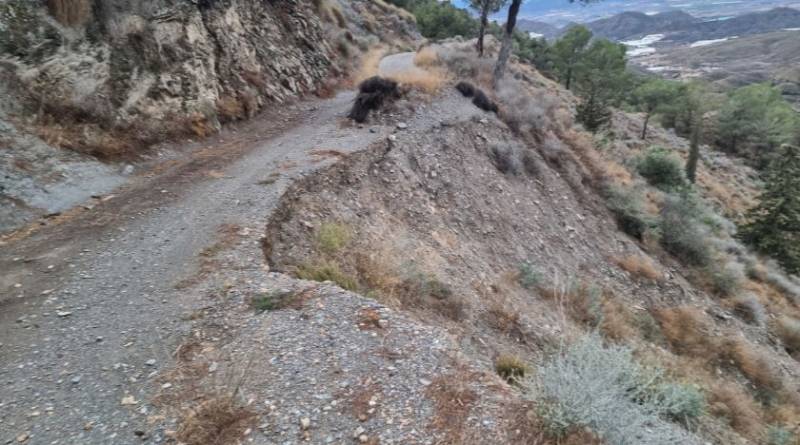

- EDITIONS:
 Spanish News Today
Spanish News Today
 Murcia Today
Murcia Today
 Alicante Today
Alicante Today
Date Published: 22/08/2025
Murcia steps up fire prevention as forests face drought and pest outbreaks
New monitoring points, track upgrades and pest control measures will be introduced to reduce wildfire danger

Spain is bravely enduring one of the worst wildfire seasons in living memory and hardly a corner of the country has been left untouched. The Region of Murcia too was hit with devastating blazes earlier in the week and as a result, efforts are being made to protect its forests for the future, tackling two problems that are deeply connected: pests that strip trees bare and the growing risk of wildfires.
Officials have announced a major push to strengthen surveillance in the mountains of Lorca, Totana and Mazarrón, while also dealing with the impact of Tomicus destruens, the pine borer beetle, which is thriving in drought-weakened forests.
“We are working to leave a legacy of more vigorous forests, prepared to face the disruptions and challenges of climate change, strengthening the protection of our natural heritage for the enjoyment of present and future generations,” said Juan María Vázquez, Minister for the Environment.
The new fire prevention initiative includes building a monitoring point in the Sierra de Pedro Ponce y Ciller in Lorca for early detection and a retaining wall in the Sierra del Algarrobo in Mazarrón to stabilise a landslide that threatens a main road.
Thinning and pruning work will be carried out on 25 hectares across the Los Abadíes Mountains in Lorca and Sierra y Llano de las Cabras in Totana to reduce the build-up of forest fuel.
In all, more than 40 kilometres of forest tracks will be improved to ensure firefighting teams can get in and out safely.
“This project represents a decisive commitment to the resilience of our forests in the face of climate change, combining infrastructure improvements and forestry initiatives that reduce the risk of fires and strengthen the biodiversity of our natural spaces,” Mr Vázquez said.
But the problem goes far beyond dry undergrowth. Vast patches of gray, brittle trees, weakened by what experts say is the worst drought in 64 years, have become perfect breeding grounds for the pine borer beetle.
 “The Region's forests are suffering continuous stress as a result of years of prolonged drought, extreme temperatures and high evapotranspiration, which is weakening our pine forests and exposing them to other risks such as the proliferation of pests and the increased prevalence of forest fires,” Minister Vázquez explained.
“The Region's forests are suffering continuous stress as a result of years of prolonged drought, extreme temperatures and high evapotranspiration, which is weakening our pine forests and exposing them to other risks such as the proliferation of pests and the increased prevalence of forest fires,” Minister Vázquez explained.Regional data suggests that nearly 50,000 trees have already died from the combined impact of drought and beetle activity. While much of the current damage is not yet in the insect’s most destructive stage, the threat grows during winter when egg-laying and boring increase.
To contain outbreaks, the regional government is using satellite images, drones and on-the-ground surveys to find trouble spots quickly. They’ve already acted on more than 160,000 pine trees by felling, removing, debarking and setting up pheromone traps.
But not everyone is convinced the work is enough. CCOO Prevention Delegate for the Forestry Brigades, Juan Pedro Cornejo, says much of the felled wood is being left on the ground, creating even greater fire risks.
“When you cut down a pine tree and it falls to the ground, you have to chip it. If you don't, many of the trunks and branches remain in the forest, and that happens 70% of the time,” he said.
“All of this is nothing more than fuel for the fire and a breeding ground for new infestations.”
The regional government plans to roll out further measures over the next two years, aiming to treat up to 10,000 hectares of forest by 2026. With 29,000 hectares already affected and an estimated 1.3 million trees destroyed, mostly Aleppo pines, the scale of the challenge is clear.
Images: CARM
staff.inc.and
Loading
See more environmental news about Spain:
OR
Sign up for the Spanish News Today Editors Roundup Weekly Bulletin to get a comprehensive email with all the week’s news for Spain, Murcia, Alicante and Andalucía.
Get a sneak peek – here are a few of our recent Subscription Bulletins:
Discount Special Offer subscription:
36.95€ for 48 Editor’s Weekly News Roundup bulletins!
Please CLICK THE BUTTON to subscribe.
Contact Murcia Today: Editorial 000 000 000 /
Office 000 000 000

































